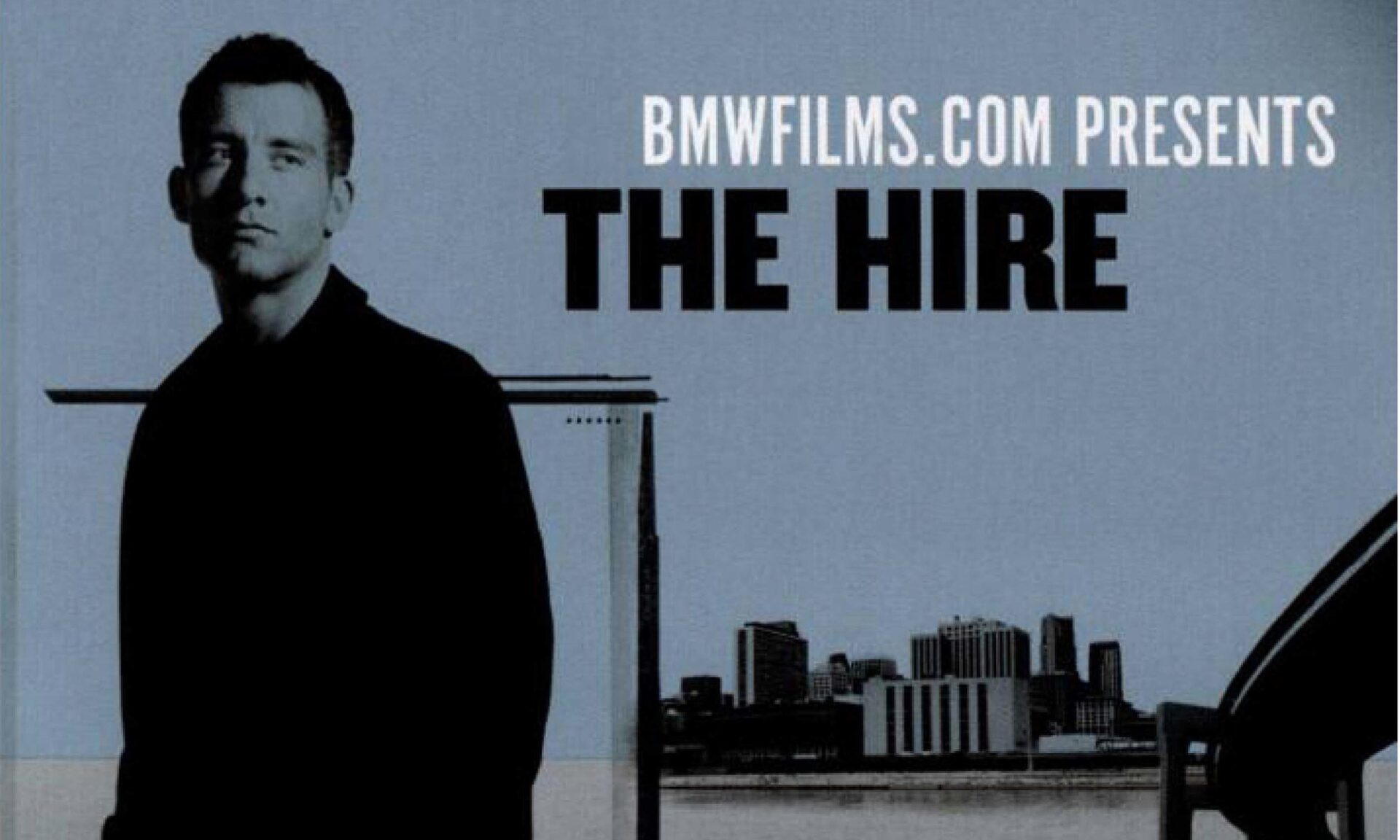Launched in 2001, BMW’s “The Hire” was a revolutionary online film series that redefined automotive advertising. Instead of traditional commercials, it featured eight action-packed short films starring Clive Owen as “The Driver,” highlighting the performance and handling of various BMW models through exciting narratives. This case study analyzes the campaign’s marketing and branding strategies, its impact on the automotive industry, and its continued relevance today.
About the Campaign
In 2001 and 2002, BMW embarked on an innovative marketing endeavor with “The Hire,” an online series comprising eight short films. The central character, portrayed by Clive Owen as “The Driver,” became the face of the campaign, emphasizing the high-performance features of various BMW cars.
The first season introduced viewers to captivating narratives, such as in “Ambush,” where The Driver ingeniously outplays armed thieves while escorting an elderly man. Another notable installment, “Chosen,” directed by Ang Lee, involved different scenarios. Each film, helmed by renowned directors like John Frankenheimer, Wong Kar-wai, and Guy Ritchie, added a cinematic flair, elevating the campaign beyond typical advertising.
BMW’s strategic online presence played a pivotal role. Recognizing that 85% of customers shopped online before purchasing cars, the series was exclusively released on the BMW Films website. Premiering at the prestigious Cannes Film Festival provided a platform for global recognition and heightened the series’ perceived value.
The impact on BMW’s sales was substantial, experiencing a noteworthy 12% increase in 2001. Over 11 million views in just four months and two million registrations on the website underscored the campaign’s popularity and success in reaching a wide audience.
Distribution strategies included the production of DVDs for customers, leading to high demand and eventual depletion. Collaborations with Vanity Fair and DirecTV extended the series’ reach, making it accessible to a broader audience and solidifying its position as a groundbreaking marketing approach.
The second season in 2002 introduced a shift in focus, featuring films like “Hostage” and “Ticker.” Unlike the first season, which showcased various BMW cars, the second season emphasized the then-new BMW Z4 Roadster, aligning with the brand’s evolving product lineup.
After a 14-year hiatus, BMW revived “The Hire” in 2016 with “The Escape,” featuring Clive Owen once again. This revival demonstrated BMW’s commitment to innovation and its understanding of the enduring appeal of the campaign.
In 2023, BMW released “The Calm,” starring Pom Klementieff and Uma Thurman, further extending the legacy of “The Hire.” The series, viewed over 100 million times in four years, has left an indelible mark on product advertising, showcasing the brand’s ability to create engaging and influential content. This ongoing commitment to the series exemplifies BMW’s adaptability and sustained influence in the marketing landscape.
Marketing Strategies
Shifting Focus to Online Audience: Recognizing the growing internet audience, BMW targeted them directly with online distribution through their website and partner sites. This pioneering move established them as a leader in embracing new media.
Storytelling over Features: Instead of dry product features, “The Hire” told engaging stories with the car as a central element. This emotional connection resonated deeply with viewers, creating a lasting association between BMW and thrilling experiences.
Celebrity Power: Clive Owen’s charisma and acting prowess added star power to the campaign, making “The Hire” feel like a mini-Hollywood blockbuster.
High-Production Value: Featuring renowned directors like John Frankenheimer and Guy Ritchie, the films boasted cinematic quality, captivating viewers with their action sequences and visual aesthetics.
Word-of-Mouth Marketing: The internet’s virality played a crucial role. The short films were shared, discussed, and praised online, generating organic buzz and amplifying the campaign’s reach.
Branding Impact
Sophistication and Performance: “The Hire” solidified BMW’s image as a brand for discerning individuals who appreciate refined luxury and driving excellence.
Emotional Connection: The action-packed narratives transcended product demonstration, creating an emotional connection with viewers through shared experiences of excitement, danger, and escape.
Digital Pioneer: BMW proved to be a leader in understanding and utilizing the potential of online platforms for brand storytelling.
Content Marketing Benchmark: “The Hire” became a benchmark for content marketing, inspiring brands across industries to create engaging narratives around their products.
Challenges and Lessons
High Costs: Producing eight short films with Hollywood-level standards was expensive, requiring a significant financial commitment.
Measuring ROI: Attributing sales directly to the campaign was challenging due to its online nature and long-term brand-building focus.
Maintaining Momentum: Following up on the success of “The Hire” proved difficult, leading to a hiatus and later revival with mixed results.
Continued Relevance
Despite its early 2000s origin, “The Hire” remains relevant today. Its focus on engaging storytelling, online distribution, and premium experience aligns perfectly with modern marketing trends. Its success is a testament to the power of understanding your audience, embracing new media, and creating high-quality content that resonates emotionally.
Conclusion
BMW’s “The Hire” stands as a landmark campaign, revolutionizing automotive advertising and influencing marketing across industries. It demonstrated the power of storytelling, the potential of online platforms, and the importance of aligning brand values with target audiences. While challenges existed, the campaign’s influence remains undeniable, inspiring companies to this day to push boundaries and create engaging brand experiences.
Also Read: A Case Study on Budweiser: “Wassup?” Brand Campaign
To read more content like this, subscribe to our newsletter
Go to the full page to view and submit the form.


